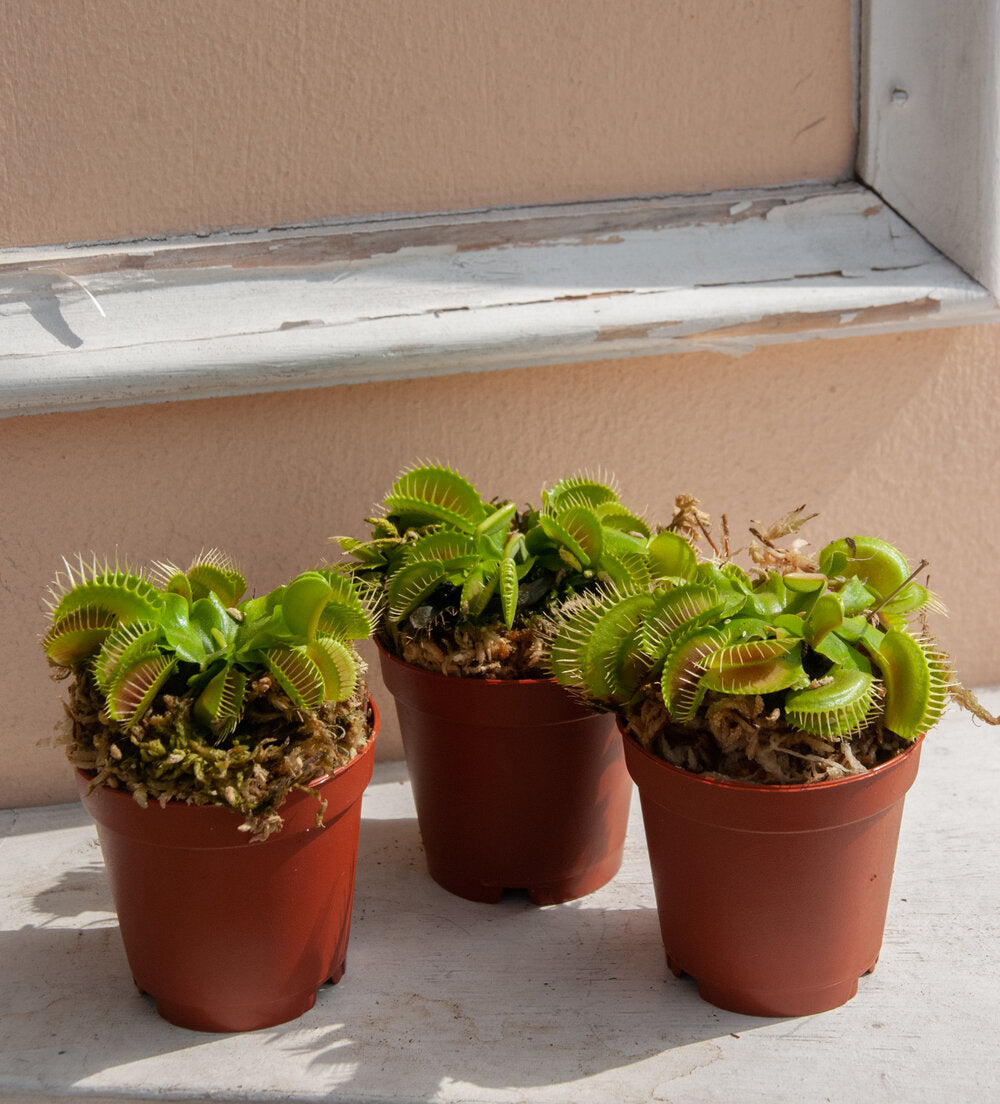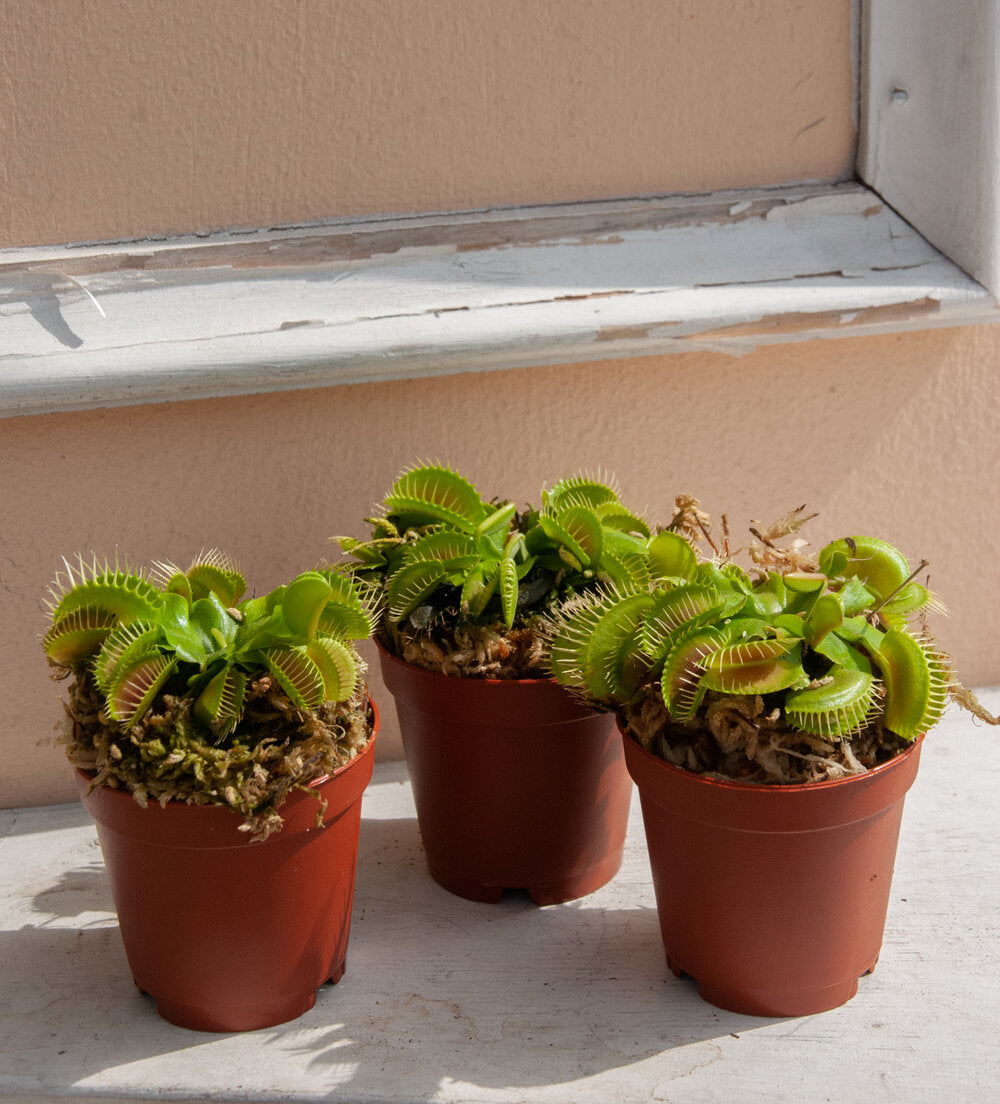B.Willow
Dionaea muscipula 'Venus' Fly Traps'
Dionaea muscipula 'Venus' Fly Traps'
Couldn't load pickup availability
Dionaea muscipula is native to the Coastal Plains of North Carolina and South Carolina. It is also known as Venus' Fly Trap. Venus' Fly Traps are facing extinction due largely to habitat destruction, fire suppression, and illegal poaching. The fly trap is currently conserved by The North Carolina Botanical Garden. You can support the NCBG and the Venus' Fly Trap conservation work by purchasing a tote, $3 from each tote bag sale will be donated to the Center for Plant Conservation's sponsorship of the Venus Fly Trap.
Light: Flytraps ideally have 6+ hours of direct light per day, you can slowly introduce them to the outdoors in the summer as well. If you do not have a bright enough spot, you can supplement with a grow light or full spectrum LED for 8 hours per day.
Water: Avoid letting them dry fully, we recommend using a plastic tray or saucer under the pot to hold water. This allows the plant to stay consistently moist and self regulate water. Water only using distilled or rainwater.
Repotting: Flytraps prefer undernourished, acidic soil, typically made of a 1:1 ratio of peat moss and sphagnum moss. Do not use normal potting mix or fertilizer! Repot in the late winter or early fall, into either plastic or glass.
Feeding: Contrary to the name, Flytraps eat all sorts of bugs! If yours lives outside, you should not have to supplement. If indoors, you can feed it 1 bug, ⅓ of the size of a trap every other week in the summer.
Dormancy: Flytraps grow from a rhizome formed under the soil which allows them to have a winter dormancy period and re sprout in the spring/summer. In order for the flytrap to grow well, they must be given bright light, slightly cooler temperatures, and less water, though still not allowing them to dry fully. If you notice your flytrap beginning to flower the best thing to do is to cut the stalk off, they struggle to use energy for new traps while flowering.
Pet Safe: Yes, 100% non-toxic!
Share


